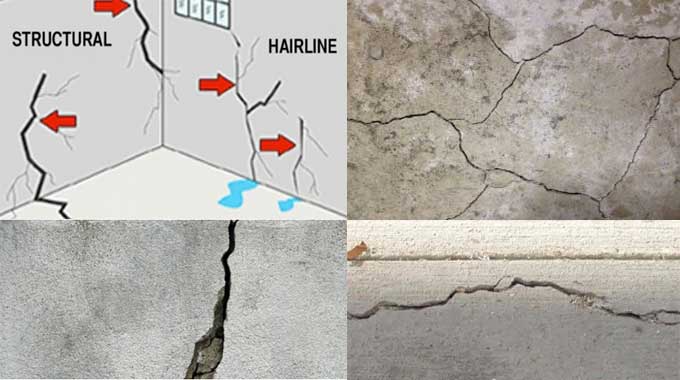
Hairline Cracks in Concrete and their Types
What do you mean by hairline cracks that occur in concrete?
It is extremely common for concrete to suffer from hairline cracks that are often misunderstood by the general public. It is natural for an owner to assume there is something wrong once he notices a crack on one of the slabs or walls of his house, especially if the concrete is relatively new.
It is not always the case that this is the case. There are some types of cracks that are inevitable and cannot be avoided. In order to control the hairline cracking, a contractor needs to do the best he can. The best way to do this is to prepare this subbase properly, by ensuring that the concrete is not overly wet, by using reinforcement where needed, and by properly spacing and locating crack control joints and expansion joints.
But occasionally fissures develop despite all safety measures. ACI 302.1-04, published by the American Concrete Institute, solves this problem.
In spite of the best floor designs and the most thorough construction methods, it is impossible to predict floors that will be free from cracks and curls in the future.
Therefore, every owner should be informed by the designer and the builder that some level of curling and cracking is to be expected on every project and that this occurrence does not necessarily reflect poorly on the suitability of the floor design or the caliber of its construction.
Varieties of cracks that occur in concrete
Hairline Cracks in Concrete
As the concrete cures, hairline cracks may appear in the foundation. Although hairline fractures do not affect this foundation's durability, they do cause leakage issues.
If a concrete foundation develops fractures soon after being placed, the concrete may have been mixed incorrectly or poured too hastily.
Because the wall edges are more stable than the centre, hairline cracks commonly develop in poured concrete foundations.
Hairline Cracks in Concrete
The horizontal cracks in this wall's centre are most likely the result of an applied load, such as improper or premature backfill compaction around the foundation, earth-settling compaction, hydrostatic pressure from the high water table and poor drainage against the foundation wall, or heavy equipment operation too soon or too close to the foundation wall.
The most likely cause of the horizontal fractures high up on the wall is frost damage. Sometimes years pass before these little fissures are discovered. A structural engineer should be consulted in a situation like this.
Vertical-looking cracks in the concrete
Multiple vertical cracks frequently show up (multiple cracks in one or more areas). Shrinkage/thermal causes vertical foundation fractures in poured concrete foundations that tend to be almost straight or to wander, usually even in width, intermittent, or more frequently straight, and are typically low risk.
Consult a structural engineer if there is a severe vertical dislocation or indications of continued movement. It's probably less of a problem than settlement if the reason is shrinking.
Either exceptional frost or ground loading might produce vertical foundation fractures. When the building builders improperly prepare a concrete base and when the wall had weak steel reinforcement as the workers poured the concrete into the wall, a more significant vertical fracture may develop. Additionally, during footing settling, cracks might appear.
Horizontal cracks in the concrete
The horizontal cracks in this wall's centre are most likely the result of an applied load, such as poorly or prematurely compacted backfill around the foundation, earth compacting during settlement, hydrostatic pressure from the high water table and inadequate drainage against the foundation wall, or improper or premature operation of heavy equipment.
This wall's high-up horizontal fissures are most likely the result of frost damage. Sometimes years pass before these little fissures are discovered. A structural engineer should be consulted in a situation like this.
Floor cracks in the concrete
Concrete slab floor fractures are rather frequent and common, not structurally concerning. To stop typical problems like dampness, insects, and damage from penetrating through, they should be fixed.
Hydrostatic pressure or a high water table is often responsible for floor cracks leaking. It is therefore recommended to fix the source of those problems prior to sealing the crack in order to redirect these issues elsewhere.
Settlement crack in the concrete
The settlement crack could also appear as a random crack on top of an uneven subgrade after the concrete has been poured in an area where the soil was uneven before the concrete was poured.
To get more details, watch the following video tutorial.
Video Source: Civil Mentors
When a foundation "bends" over a single point, which allows differential settlement, settlement cracks tend to be more extensive at the top of the crack than at the bottom of the crack.
It is usually the case that cracks of this type are continuous and may occur multiple times on a wall.


